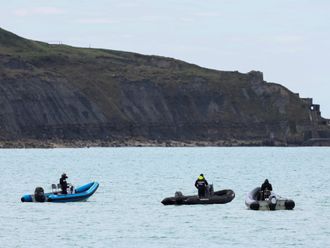Avenches, Switzerland: A priceless gold bust of emperor-philosopher Marcus Aurelius, one of Europe's greatest Roman relics, has returned to this quiet Swiss town where it was found in an ancient sewer 67 years ago.
One of only three golden imperial busts to have survived across the vast territories of Rome's empire, the excitement surrounding its discovery in 1939 was so great that residents who witnessed it still talk about it today.
Now, they are thrilled it has returned home, albeit only for the summer and under tight security at Avenches' Roman Museum.
After its discovery, the bust was whisked off to bank vaults for safe-keeping and has only been occasionally loaned for major foreign and Swiss exhibitions, largely remaining locked away although people in Avenches have always regarded it as theirs.
The reappearance in the town of the pensive 22-carat image a power symbol carried at the head of legionary columns of the emperor who ruled from 161 to 180 AD has served to highlight the mysteries that still surround it.
Where was it made? How did it come to a town several days' march from the nearest legion garrison? Why was it in a sewer? And why did whoever put it there probably to keep it safe from "barbarian" attack never recover it?












